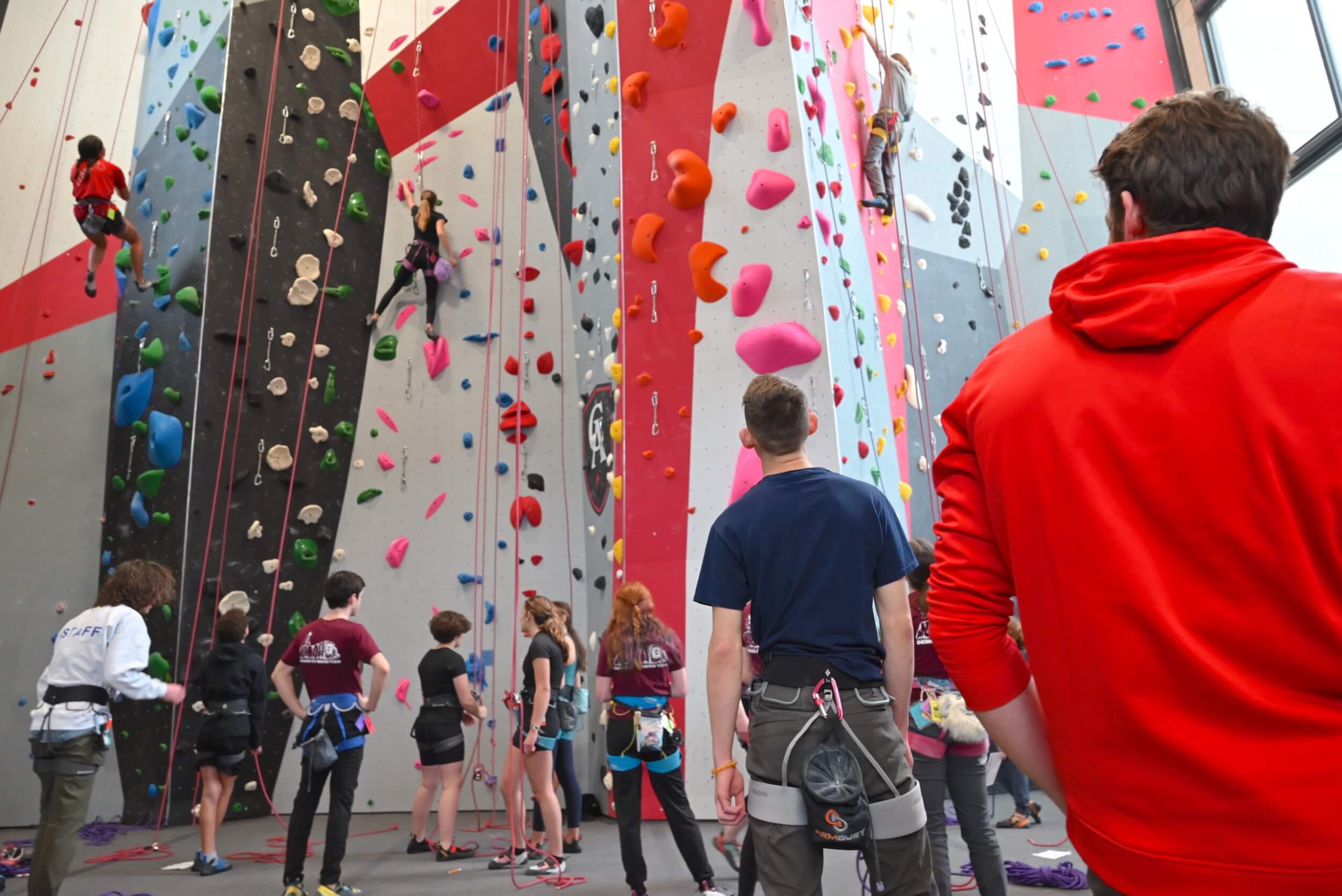Spend any time in Colorado Academy’s Climbing Center talking with new head climbing coach Brian List, and you’ll hear a lot about the “beginner’s mindset.”
“For me, most of rock climbing is about being open to learning more—because there’s always more,” says List, a multi-sport athlete—he played and coached tennis for years before taking up climbing—as well as an academic standout, with a degree in molecular and cellular developmental biology from CU Boulder. “Having a beginner’s mindset means there’s always more that you have the capability to be.”
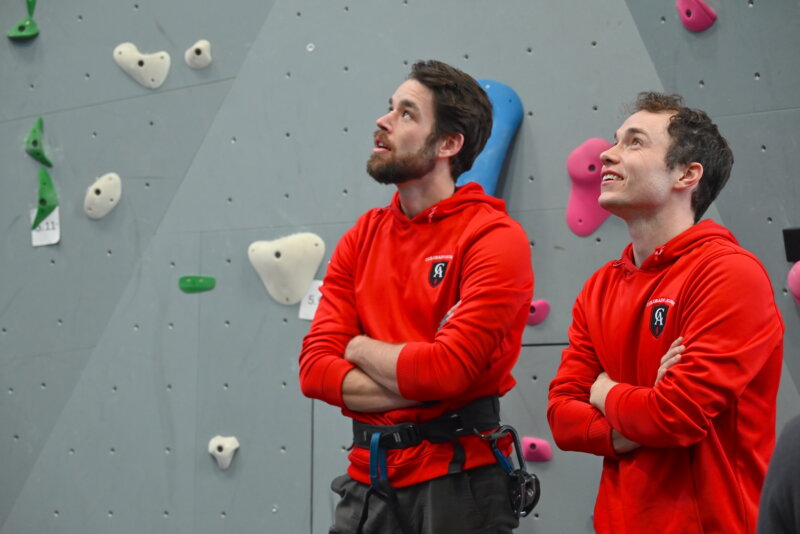
List, who came to CA along with his assistant coach and route setter, Corey Lans, from Movement Baker, where they coached and taught mostly adults at both the team and individual levels, observes that adults can often approach climbing with a rigid understanding of who they are and their abilities and place in the world. That can be a liability in a demanding sport, where failure is a constant reminder that even great strength, endurance, and technique are sometimes no match for an intimidating roped ascent or bouldering “problem.”
But with the Middle and Upper Schoolers they work with at CA on a daily basis, List and Lans agree the vibe is wholly different.
“The kids here at CA show up hungry to learn and ready to be flexible,” List says. “That sets them up for success, because in climbing, we spend a lot of time working to accept that failing—in a really controlled way, of course—is how you improve.”
“And there is an endless amount of opportunity for growth in climbing,” adds Lans. “For me, that’s what keeps it interesting day after day.”
More than muscle, says List, it’s psychological and emotional resilience—the ability to push past frustration and failure—that makes a great climber. And helping students build those inner reserves is what inspires him as he works with Middle and Upper School athletes.
“The physical growth, the mileage they’re putting in on the wall, is important. But when you see young climbers discover something they didn’t know they had inside them, whether it’s overcoming their fear or going beyond what they thought was their limit, that’s an incredible reward. Climbing teaches these kids to be better human beings—they become more genuine, they develop their own style, they bring their full selves to the wall. That’s something only climbing can really do.”
More than one way to play
Every day, about 20 Middle Schoolers who have chosen climbing to satisfy their trimester sports requirement take over the Climbing Center during the early afternoon, scrambling up the 12-foot-high bouldering areas or scaling the 28-foot-high climbing walls on belay.
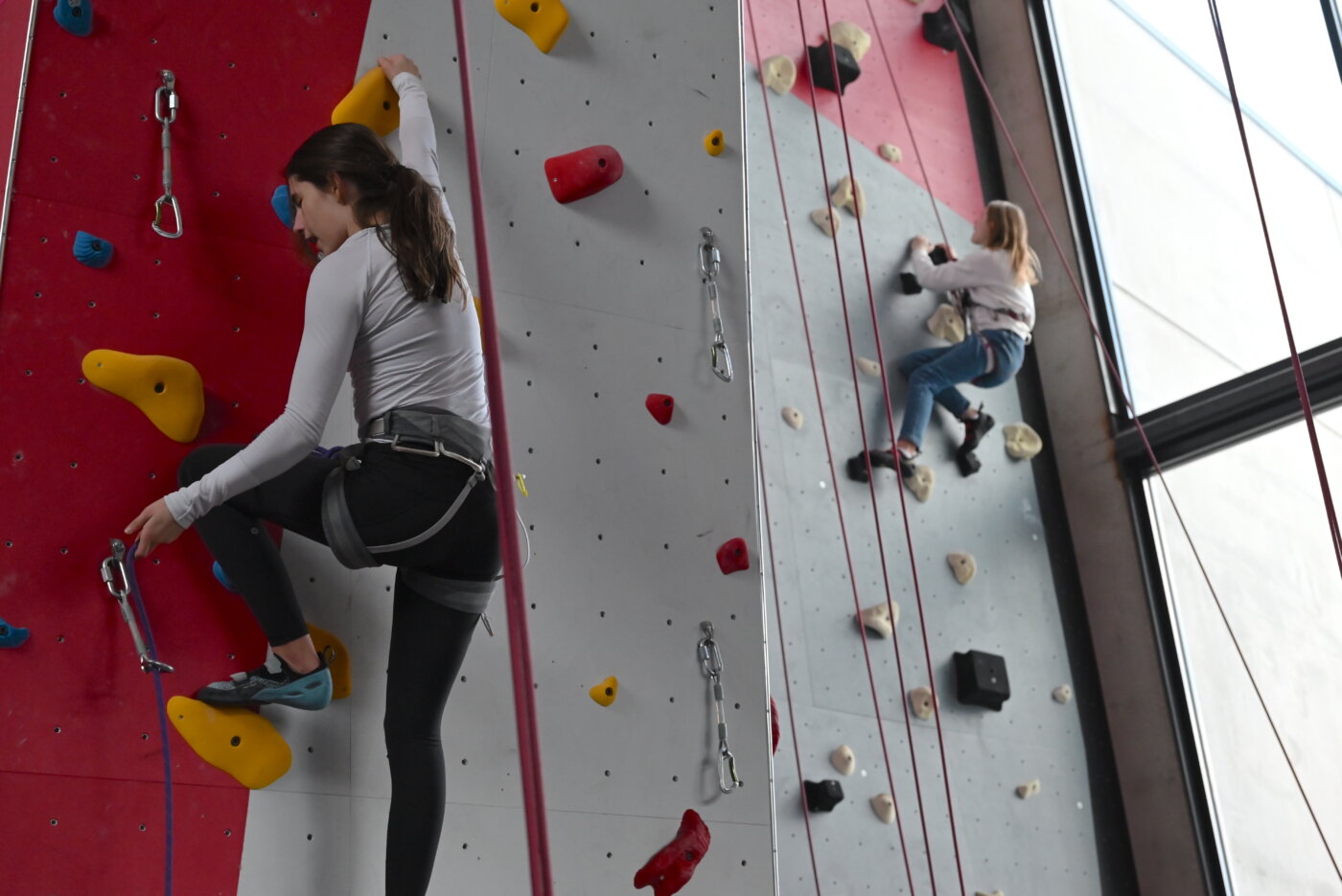
Middle Schoolers, says List, come to climbing with a vast range of experience. Some have been learning since Kindergarten, practicing the sport weekly in one of the many programs available at climbing gyms all around the Denver metro area. Others are absolute beginners getting their first taste of rock climbing on one of the easy routes up the wall that List and Lans have designed just for them.
Meeting each climber where they are is one of the biggest challenges of teaching at the Middle School level, the two agree.
“We make sure there is always somewhere for somebody to get started,” says List. “Then, our students can find out where they’re at, and go from there. Some will pretty quickly figure out that climbing is absolutely for them, while others will discover that belaying is their thing. And in many ways, that doesn’t really matter—for us, the community aspect of climbing is the core value. There’s so much more to this sport outside of the physical.”
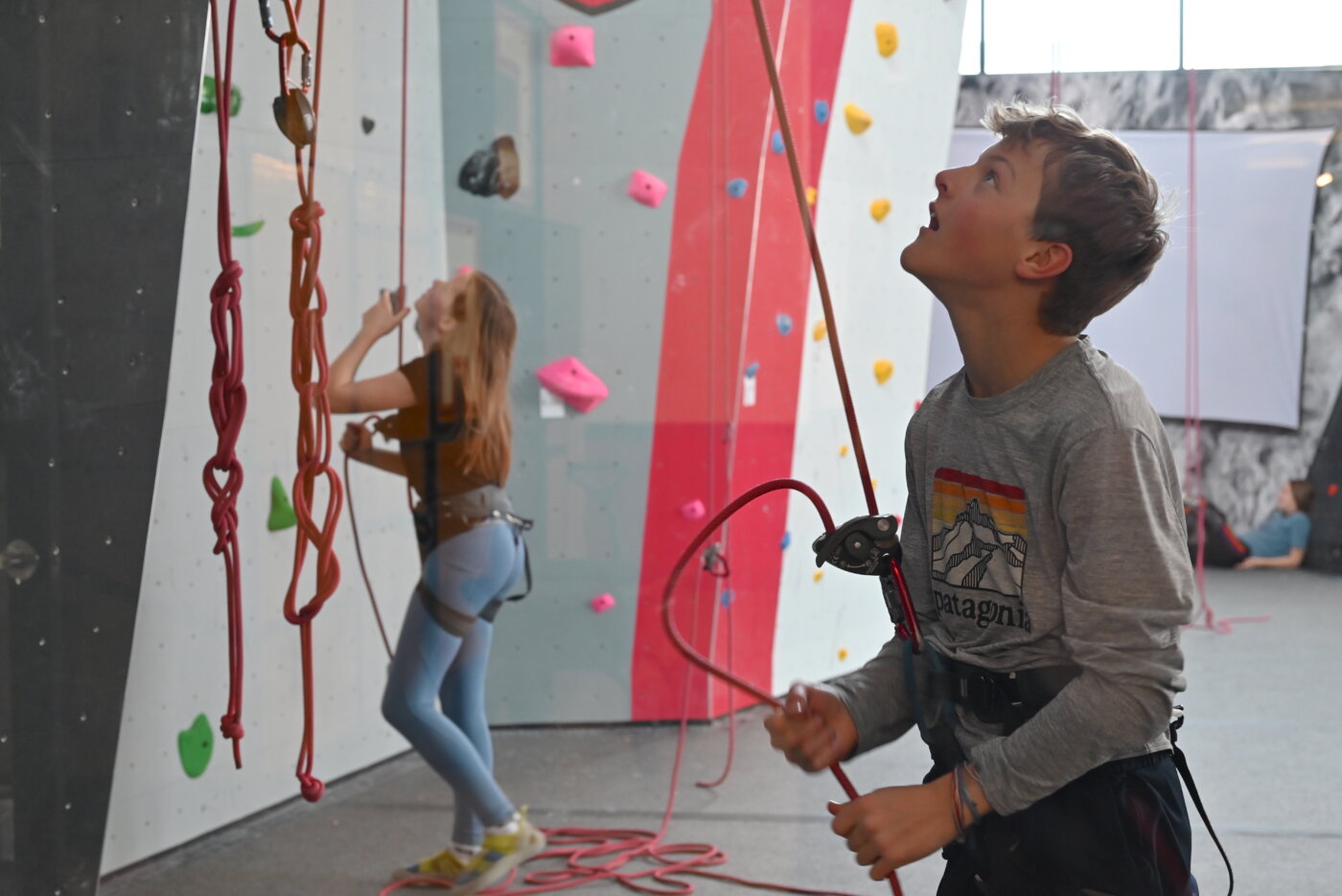
Lans adds, “One of the best things about climbing is that there are so many different styles and disciplines; most people can find something they enjoy. If they don’t like bouldering, they might like roped climbing, or vice versa. Some people enjoy balance moves, and others like using brute strength to pull themselves up the wall.”
CA’s Climbing Center offers all those challenges, and more, for climbers at every level. In the main part of the facility, visitors find 13 standard top-roped and four more auto-belaying climbing areas; several of these include bolted-on carabiners so climbers can practice “lead climbing,” where they carry up and attach their own safety rope instead of having it descend from the top. The walls feature color-coded routes of varying levels of difficulty, ranging from an easy 5.5 on the Yosemite Decimal System scale—with plenty of large, comfortable hand- and foot-holds for every move—to a demanding 5.12 or 5.13—where a nearly sheer and sometimes overhanging course demands intense, small holds called “crimps,” technical movements, and great athleticism. Over in the bouldering section, where climbs are rated according to the V-scale, students can find routes that range from a V0 (“a climb that an in-shape grandparent could tackle,” according to Lans) to a V10, where advanced skills such as the leaping “dyno” are mandatory for success.
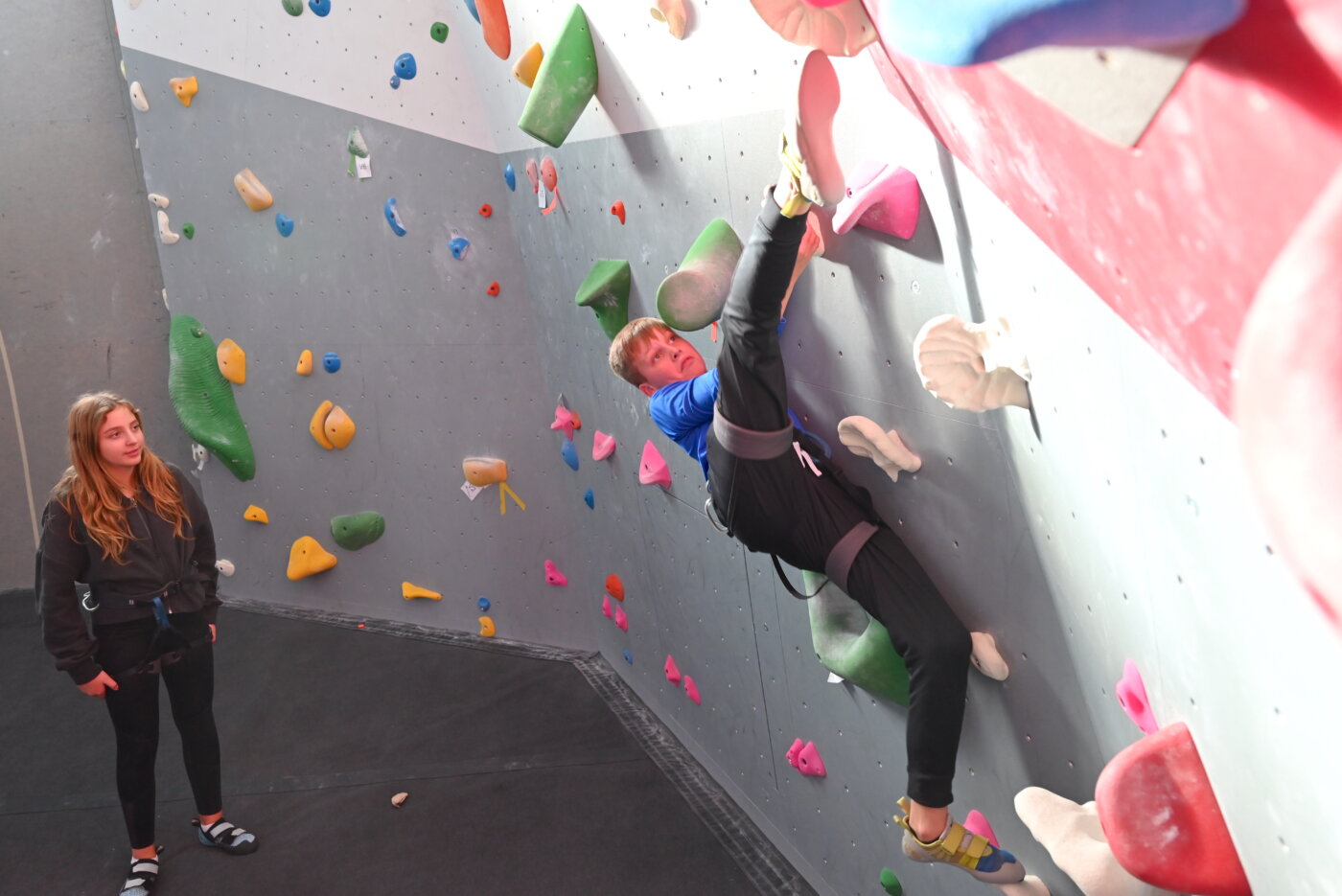
“Not a lot of other schools have a climbing facility that’s this extensive for Middle Schoolers,” says Eighth Grader Skye Leach, who has climbed competitively for several years outside of CA. “I think it’s really cool that we can start growing our team now, so we can be competitive in high school.”
Another experienced Middle School climber, Seventh Grader Alex Kennedy, adds, “Climbing is such an intensive sport—after you complete one of the climbs or challenges here, it’s super-rewarding. It’s also a really unique sport: no matter how far you get, you can keep growing and growing and growing.”
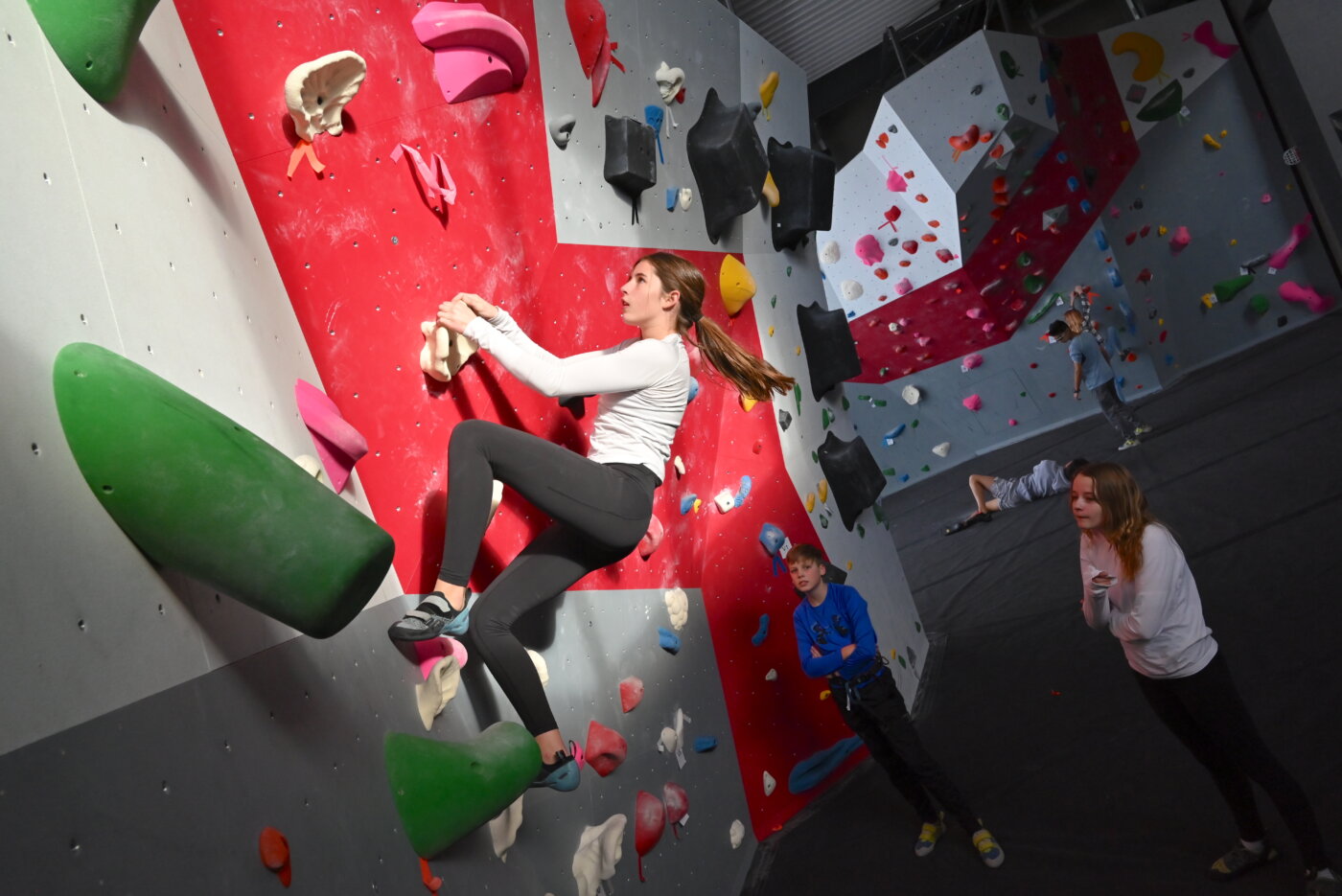
If there is anything that all climbers in CA’s facility do have in common, it is safety. For boulderers, who never climb more than a half-dozen feet off the ground, coaches List and Lans teach the science of falling correctly onto the heavily padded landing area below the wall. With roped climbing, proper belaying technique receives heavy emphasis, and as an added safety measure, cam-locking assist devices called “gri-gris” are attached to all climbing ropes, providing a fail-safe backup for human belayers.
“We make sure every student approaches the wall with a solid foundation of safety knowledge and practice,” says List. CA also provides climbing harnesses and tightly-fitted climbing shoes with sticky rubber soles, which offer improved traction on smaller footholds. The result, List says, is that anyone can climb safely and improve rapidly in CA’s Climbing Center.
Motivated competitors
After the Middle School climbers have left for the day, the 40 or so Upper School students who are part of the Junior Varsity and Varsity Climbing Teams arrive, prepping for competition with strength and flexibility routines, climbs focused on nuances of form and technique, and group discussions with the coaches. These athletes are “ridiculously motivated,” according to List and Lans.
“Every student on the competitive teams is deeply invested in climbing and really wants to be here,” says Lans. “It makes it so much easier to teach and coach.”
“These are strong young climbers,” adds List. “Some of them have been competitive in the sport for years, so during practice we’re focusing not only on increasing their physical drive and technical abilities, but also on things like emotional regulation, being grounded in intensely stressful situations, and making quality decisions in a split-second.”
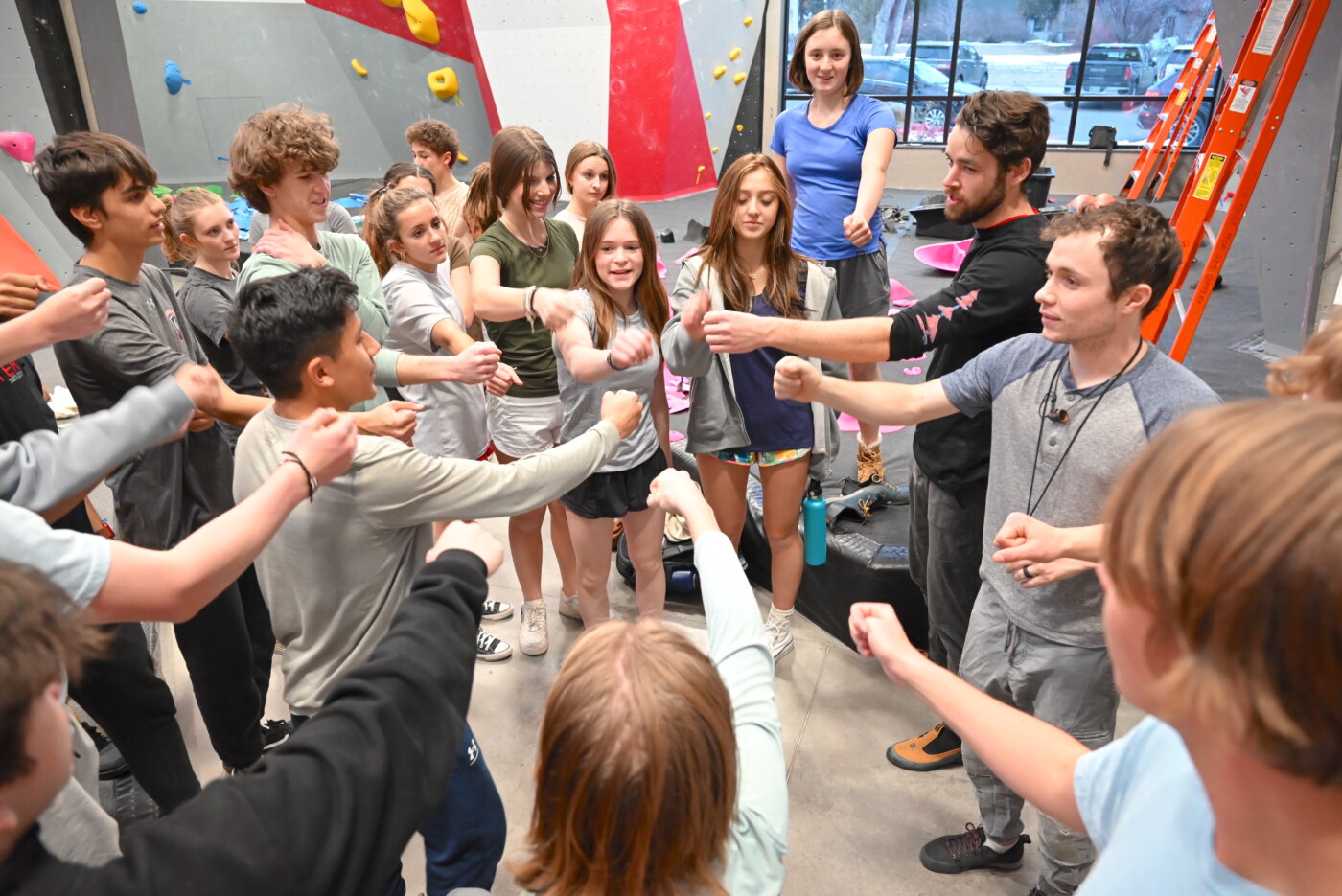
According to Senior and Varsity Climbing co-captain Sydney Leach—older sister to Skye—“The energy that Coaches Brian and Corey bring to the Climbing Center gets everyone else excited, too.” With five years of climbing experience behind her, including competing on a club team and, more recently, tackling outdoor multi-pitch expeditions, Leach explains, “This is a different kind of team than I’ve been on before: these coaches focus a lot more on the mental side of climbing, rather than brute force.”
Yoga is core to the training approach developed by List and Lans.
“Yoga and rock climbing really feed into each other in so many ways,” Lans explains. “The physical flexibility yoga emphasizes is obviously really helpful. The focus on breath and emotional grounding is even more powerful when you’re up on the wall. Being able to pull yourself together and refocus is so important.”
“Corey and I are big yoga fans,” acknowledges List. “We’ve both been doing it probably longer than we’ve been climbing. Yoga helps answer that question, how do you persist when you’re tired? It can be hard to teach how to be truly flexible—not just in your body, but in your approach to things. For climbers, that’s a key lesson, and yoga teaches it.”
A first for the Climbing Center
On January 21, the Upper School athletes’ physical and mental preparation was put to the test as the Varsity and JV Climbing Teams hosted a half-dozen other high schools for the first time at an official American Scholastic Climbing League meet in CA’s Climbing Center.
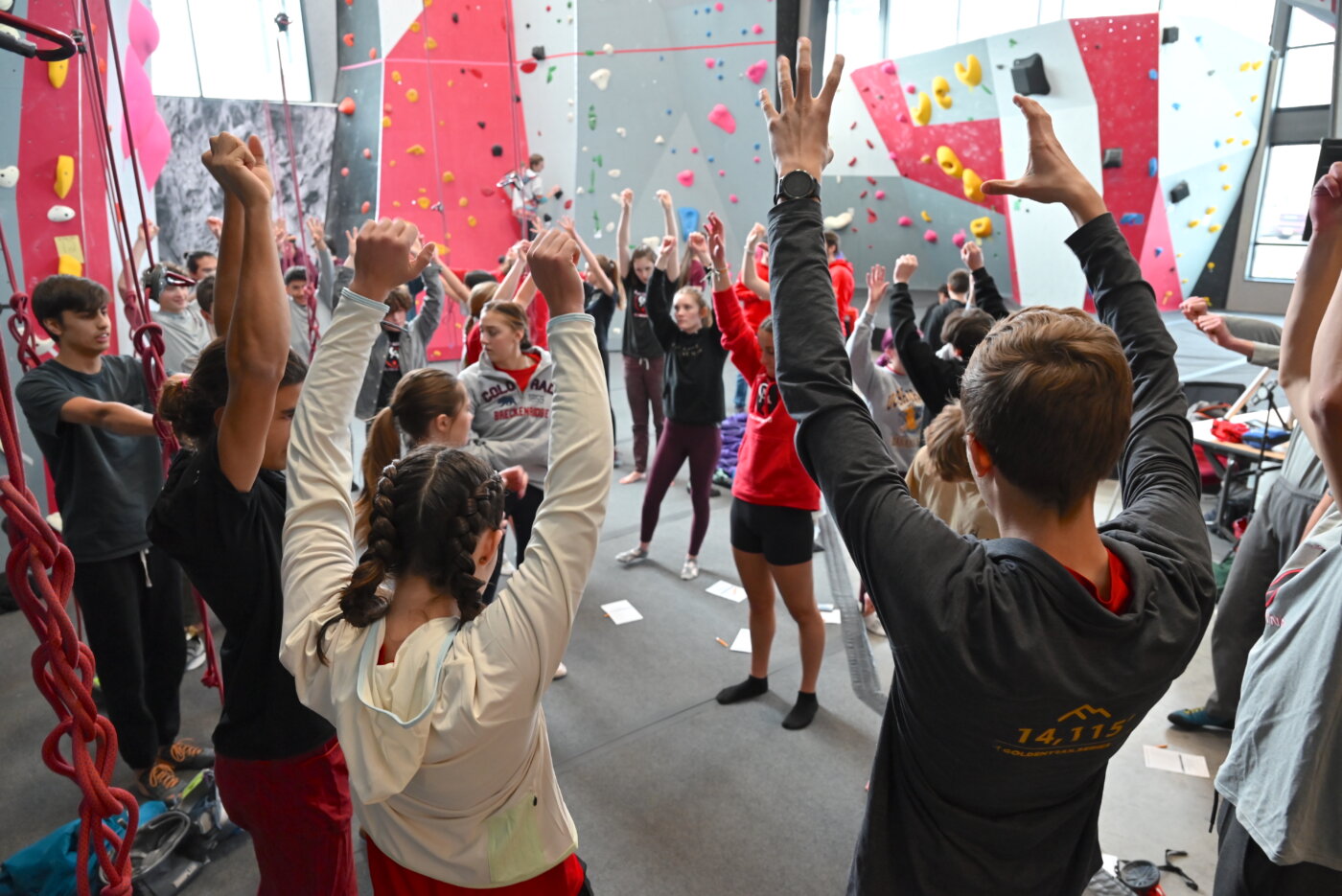
The competitions are normally held at much larger commercial climbing gyms, explains List, so to make the most of the Climbing Center’s smaller layout, he and Lans spent a full week redesigning and resetting climbs to ensure they were challenging enough for some of Colorado’s top high school climbers.
“It was a little intimidating,” List admits, “because one of the League athletes is actually on the national climbing circuit. But we made it a point to set routes that would not only test the competitors with difficult technical moves, but also tire them out and require plenty of strength and endurance.”
The art of route-setting, continues List, speaks to the inherent appeal of rock climbing as a sport—and, for some, as a lifelong passion.
“The way that rock climbing requires you to find the middle ground between art and science is beautiful,” says List. “When you examine a wall from the ground, you’re like a scientist, piecing the climbing moves together in your head. But when you’re actually on the wall, flow and style come into play, and it becomes an art form.”
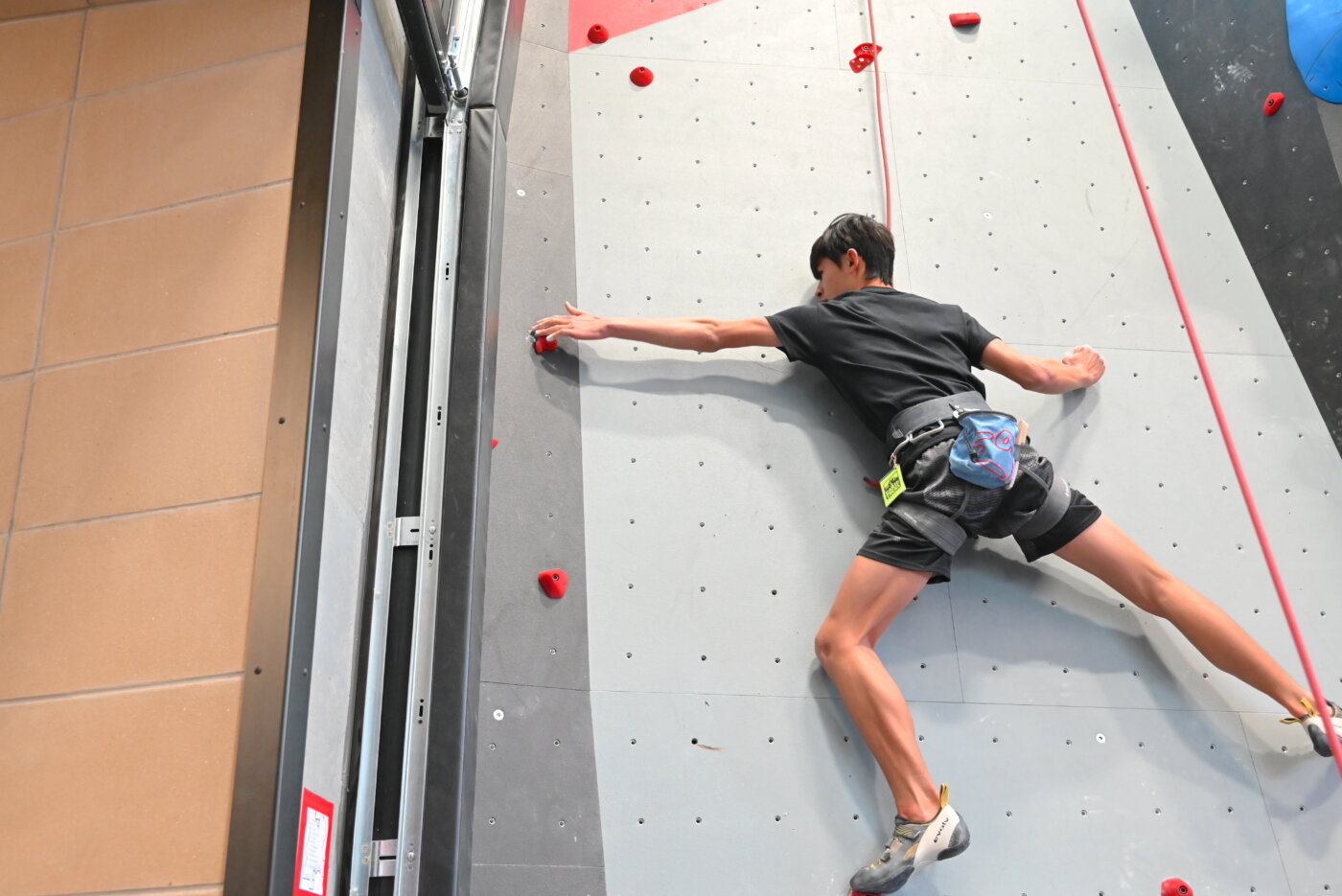
During the three-hour competition, climbers chose from 20 roped and bouldering courses, earning points when they successfully navigated to the top of the wall; bonus points were awarded when climbers added an extra level of difficulty, such as being able to “flash” a route—that is, climb it on the first try—or ascend while lead-roping rather than being top-roped. Some routes, with large holds generously spaced all the way to the finish line, proved essential in offering less experienced athletes a chance to add to their scorecard. Others, with the tiniest of protrusions spaced so widely they required a risky stretch to reach, remained unclimbed by all but the most veteran competitors.
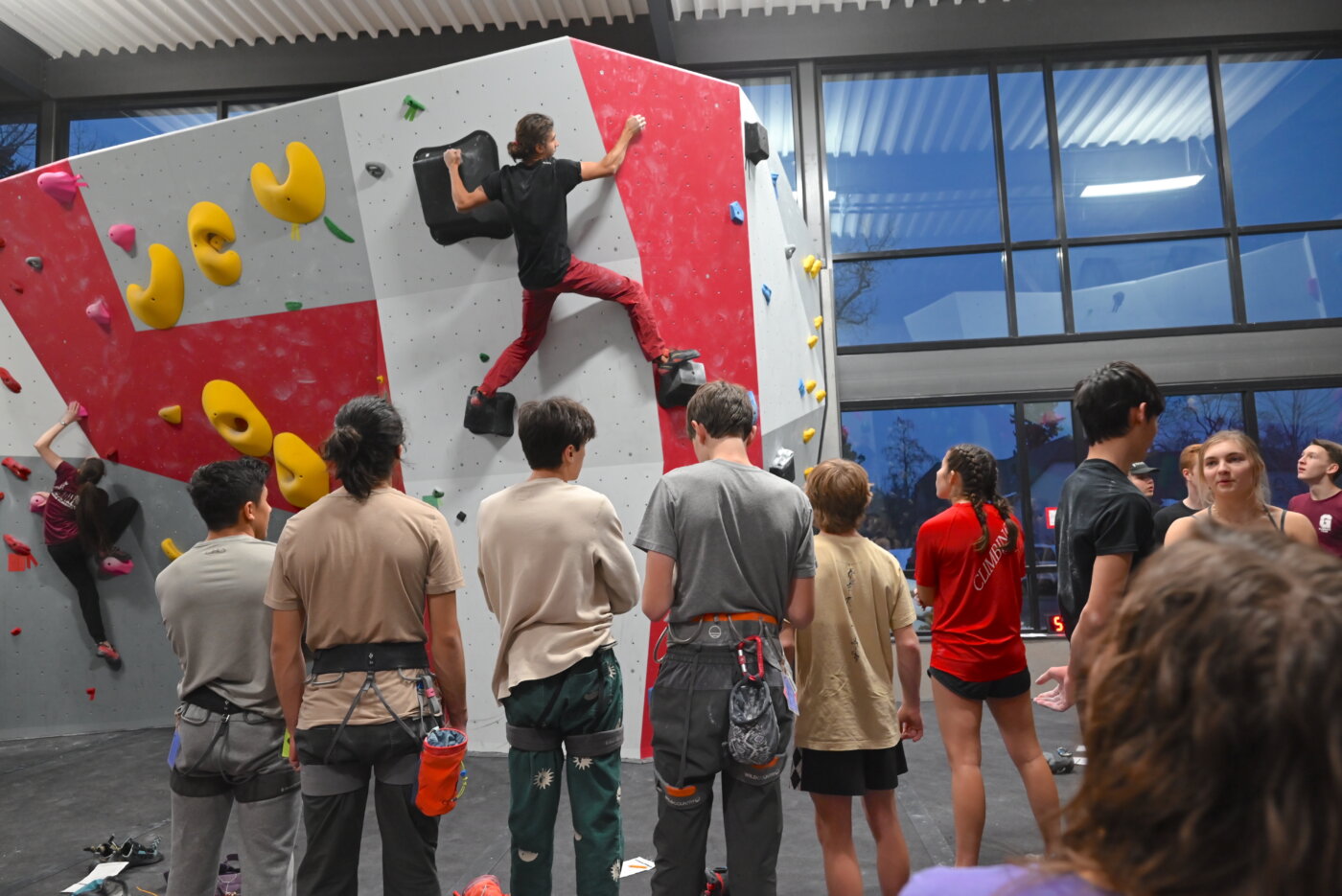
Throughout, CA climbers came together as a community at the foot of the wall. They stood in pairs and pointed as they pondered the best way up. They sat in groups to urge on a teammate at the “crux,” or hardest point, of a climb. And they hurried to form a congratulatory circle around any climber who made their best attempt, whether successful or not. In the end, the combined CA squads won both the boys and the girls heats, with Senior co-captain Harris May earning First Place overall.
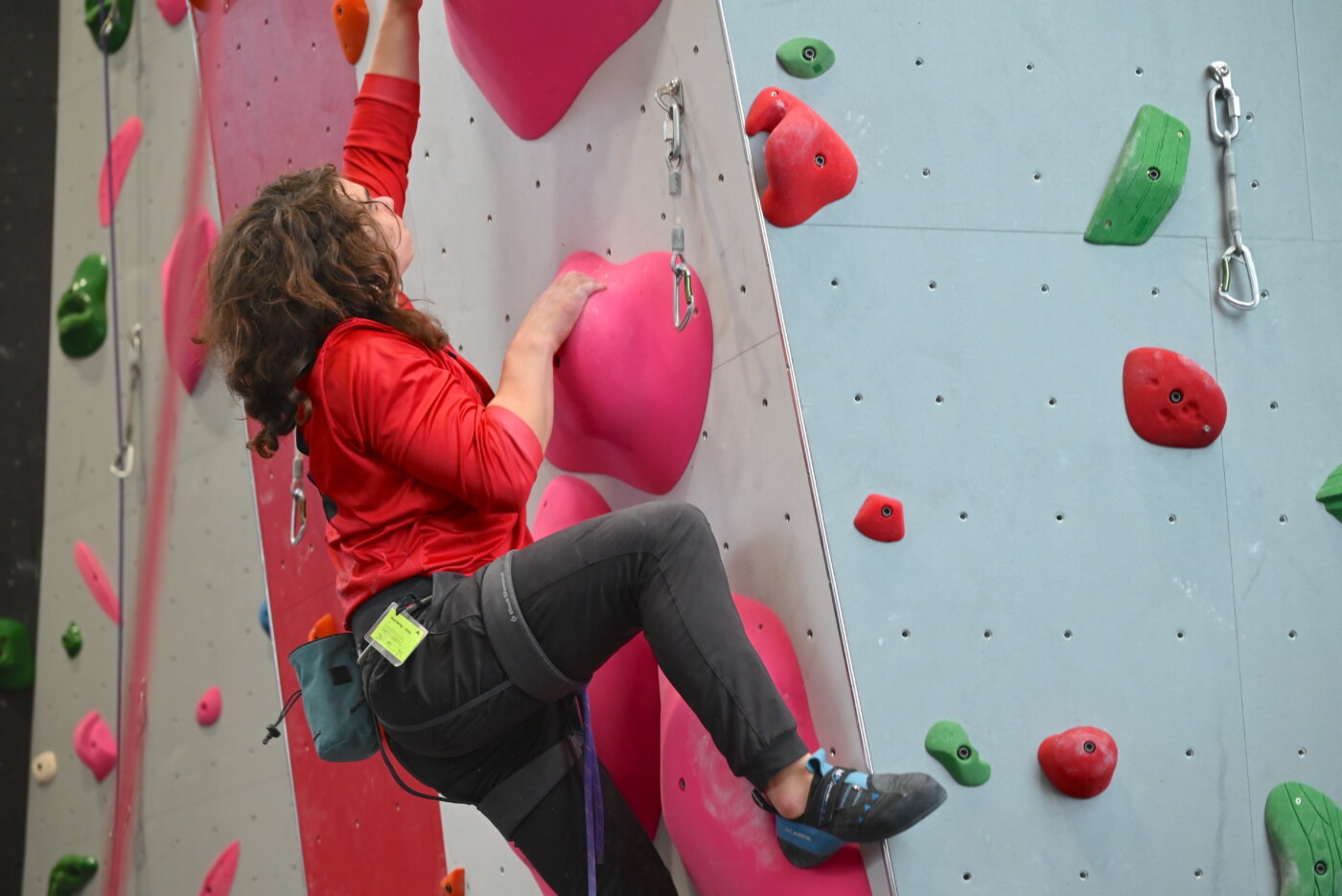
Evident as much in competition as at daily practice sessions, it is the community that’s grown around climbing at CA, rather than any particular wins or titles, that is central to the experience of these young athletes. As Sydney Leach explains, “Even though when you’re climbing, it’s only you and the wall, the support that everyone on the ground gives you is unmatched. Because climbing is only just starting to break into the mainstream, climbers feel connected with each other. It’s one of the more supportive, full-commitment, genuine groups out there. I climb to be a part of that.”
Junior JV co-captain Ailee Doniger, who’s been climbing since age six, says simply, “The community we have here around climbing is great, because everyone is really nice.”
And List acknowledges, “Being part of the CA community was one of the reasons I came here.”
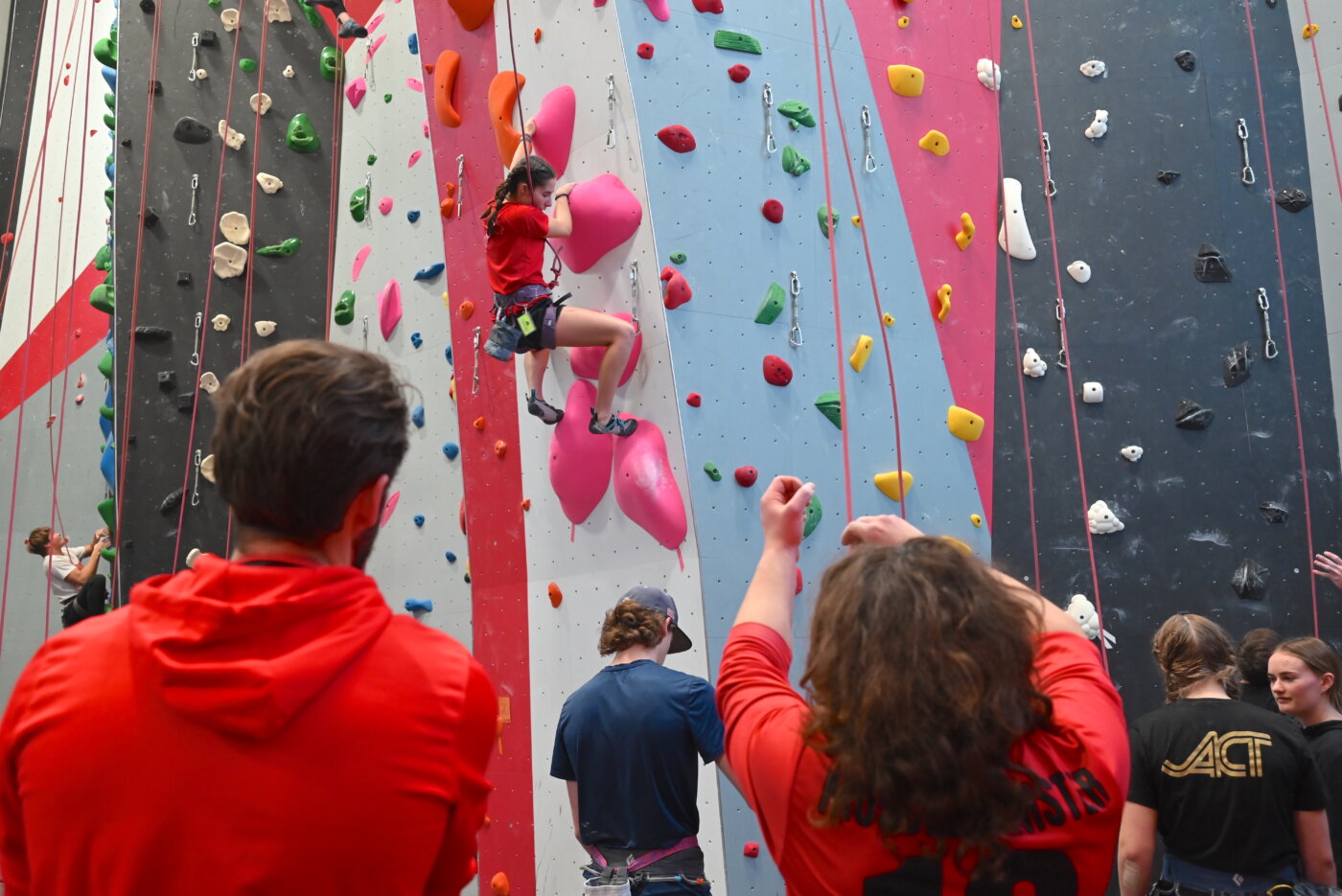
A common piece of jargon in climbing, “beta” means information about how to ascend a given climb or conquer a bouldering problem. Climbers acquire beta when they share tips and advice about a route with one another. Rather than being seen as “cheating,” something that could give one competitor an unfair advantage over another, exchanging beta instead is seen as central to the sport. In CA’s Climbing Center, not to mention at climbing gyms, competitions, and actual rock walls and boulders the world over, beta is, in fact, the glue that holds sport together.
Though it may be one of the most individual of pursuits, at the same time, climbing underscores the human connections that are the essential ingredient in all sports.
As Sydney Leach affirms, “Climbing makes you so strong, both physically and from a confidence perspective. I love connecting moves and getting into a rhythm. But Coach Brian has told us how much he wants us to grow as people, even more than he wants us to grow as climbers. I think that’s really important in a high school program.”
